Modern Chinese typically involves two main forms of writing: Traditional Chinese and Simplified Chinese
Towards the end of the nineteenth century, an effort to increase the literacy rate resulted in the People’s Republic of China (PRC) making the decision to simplify the written Chinese language. Thus two distinct versions of written Chinese came into being – Traditional and Simplified Chinese.
Chinese characters are the system of symbols used to write Chinese. Unlike an alphabet which represents only sounds, each Chinese character has a unique meaning. Altogether there are over 50,000 characters, though a comprehensive modern dictionary will rarely list over 20,000 in use. An educated Chinese person will know about 8,000 characters, but you will only need about 2-3,000 to be able to read a newspaper.
Simplified Chinese
Traditional Chinese
Simplified Chinese is the “modern” script used in China and Singapore. The simplified script saw a reduction of the number of strokes per character and a reduction of the number of characters in common use.
Traditional Chinese is the original Chinese script. It is still in use today in Hong Kong, Taiwan, Macau and many overseas Chinese communities, including Australia up until recently. However, Simplified Chinese is gradually gaining popularity among overseas Chinese as more mainland Chinese emigrate and travel abroad.
Did you know that…
more people speak Mandarin than any other language in the world? China is the most heavily populated country in the world with over 1.33 billion people.
77% of Chinese visitors to Australia reported they could not speak English well or at all? Making Chinese travellers feel welcome to our beautiful State is pivotal to enhancing the visitor experience. At the most basic level this involves providing consistent and excellent customer service, more Chinese ‘speaking’ staff and improved Chinese signage.
What is Mandarin and what is Cantonese? And what about Taiwanese?
The Chinese script, or writing, should not be confused with the spoken language (or dialect). Mandarin, Cantonese and Taiwanese are all Chinese dialects.
Mandarin is the major dialect of China, the “common language” spoken by about 70% of the total population. With close to 850 million speakers, Mandarin Chinese is by far the world’s largest language. Standard Mandarin is the official language of
- the People’s Republic of China (PRC)
- Singapore.
Cantonese is the dialect of Yue Chinese spoken in:
- the vicinity of Canton (i.e. Guangzhou) in southern China.
- Hong Kong (alongside English)
- Macau (alongside Portuguese).
It is traditionally the most spoken Chinese dialect among overseas Chinese communities, but the use of Cantonese is now diminishing in favour of Mandarin.
Taiwanese (or Taiwanese Hokkien) is spoken by 70% of the population of Taiwan, although Standard Mandarin is the official language of the ROC.
Keep in mind however that Chinese has eight major dialect groups: Putonghua (Mandarin), Yue (Cantonese), Wu (Shanghainese), Minbei (Fuzhou), Minnan (Taiwanese), Xiang, Gan and Hakka PLUS many sub-dialects. Note that in China the various regional languages are considered dialects, even though they are probably closer to being distinct languages.
Read more…
More useful information can be found in the brochure ”Ni Hao China”, produced by the Queensland Tourism Industry Council.




